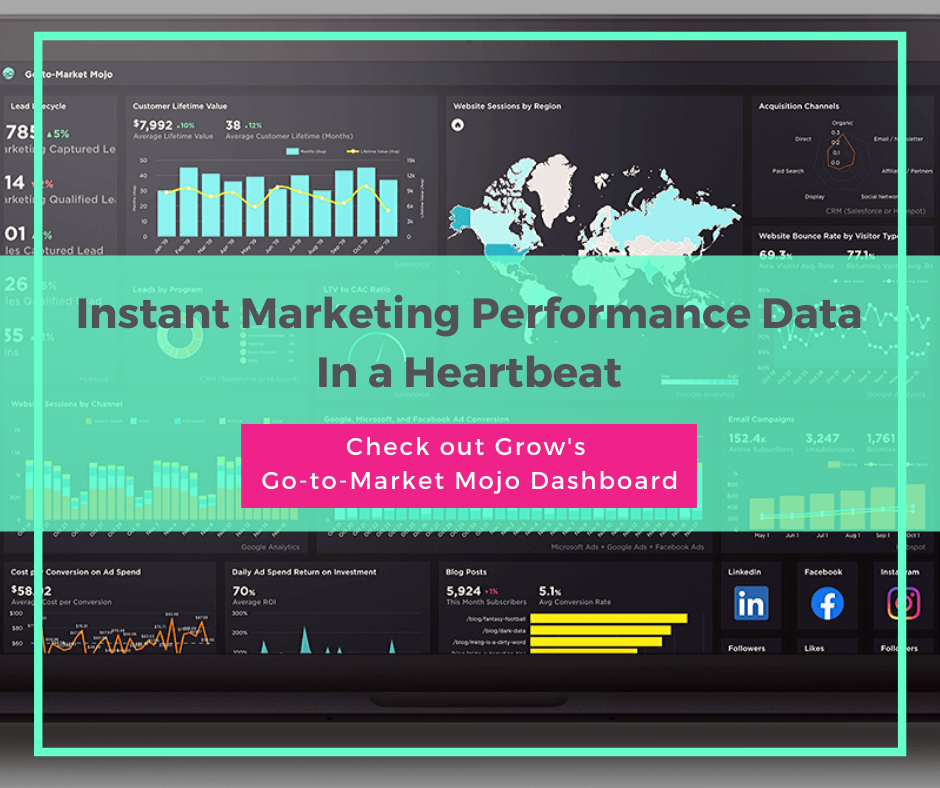Key performance indicators (KPI) for social media evaluate the success of a business based on specific activities or marketing campaigns.
Whether you’re creating a money-making Facebook page or a Twitter profile—evaluating key performance indicators (KPIs) is a crucial step in the sales process.
After all, what gets measured gets improved.
Sure, you can publish dozens of posts per day. But you can’t quantify progress and performance without measuring metrics. You need to figure out how social media marketing efforts impact your online influence and sales in the long run.
But how do you set profitable KPIs for social media?
There is no clear answer. Although social media marketing tools can measure hundreds of metrics, the KPIs you set should be based on the objectives of your organization.
In this post, we’ll discuss the main types of KPIs that you must monitor to determine the metrics that matter most for your business.
Here’s what you need to know.
Choose KPIs Related to Your Business Objectives
Key performance indicators (KPIs) should be based on your businesses’ objectives.
A social media metric could be chosen based on goals like increasing sales, growing your customer base or boosting your number of followers.
For example, here’s a list of goals and their corresponding metrics:
- Goal 1. Boost brand awareness by gaining 10,000 followers. KPIs would include follower count and social media reach.
- Goal 2. Boost customer engagement by 10%. KPIs would include the number of likes, shares or comments.
- Goal 3. Increase conversion rate by 5%. KPIs would refer to the number of users who performed a specific action. This could include the number of users that subscribed to an email list, bought a product or downloaded content.
The success rate of each objective should be measured by a related set of metrics.
4 Types of Key Performance Indicators
Now, how can you choose which metrics to focus?
According to experts, there are four main types of social media KPIs:
- Engagement
- Reach
- Leads
- Conversions
Let’s discuss each type.
1. Engagement
Social media engagement refers to interactions that you have with your audience.
Since social media is a social platform, the success of your campaign is based on the amount of engagement and discussions that you can generate. This encompasses likes, shares and comments that you receive in your profile.
Engagement is not limited to having one interaction per customer. Ideally, you want posts that engage potential leads and current customers.
A video or post may have thousands of views, but it may have minimal impact with no reactions, likes or comments. After all, engagement is a sign that your message resonates with your target audience.
Social media platforms also factor algorithms in making decisions. Posts with more initial engagement, immediately after they’re posted, will likely be shown to more people. Engagement is a sign that the content is relevant and interesting for users.
That said, here is a list of social media KPIs that are associated with engagement:
- Mentions. Refers to the number of times your brand was tagged or mentioned by other social media users. This indicates that customers and followers talk about your business with their network.
- Likes. Refers to the number of times that users clicked the like button to show approval of your content.
- Shares. Refers to the number of times that users shared your post with their social media network. More shares indicate that your post is reaching more people.
- Comments. Refers to the number of responses, answers and reactions to a blog post. This includes praise, discussions and criticism. Even if some comments are critical, this proves that your audience is interested in your posts.
- Average engagement rate. Refers to the number of likes, shares and comments that your business generates relative to your number of followers. Naturally, the more followers that you have, the more interactions that you should receive.
- Profile visits. Refers to the number of people that viewed your profile. Your business may get tons of followers but it doesn’t mean anything if they never check out your account.
- Active followers. Refers to the number of people that subscribed to your account and viewed updates of your content.
- Clicks. Refers to the number of people that clicked in your post. This metric indicates that the post piqued your audience’s interest.
2. Reach
Refers refers to the number of social media users that have viewed or accessed your posts. More reach may indicate that your brand has more influence or that there are many social conversations about your brand.
Unlike engagement, reach only refers to the number of people that saw your post. It doesn’t take into account the engagement or interactions that you generate.
Here are some metrics related to reach:
- Followers. The number of people who subscribed to your businesses’ social media page.
- Traffic. Refers to the percentage of traffic coming to your website which originated from your social media posts or bio links.
- Impressions. Refers to the number of times that your ads were seen on screen. When users view your ad, then scroll up immediately, this counts as one impression. If a user saw your ad three different times in a day, this counts as three impressions.
There are usually three main types of impressions:
- Organic Impressions. Refers to the number of times that your content organically appeared on a user’s newsfeed.
- Paid Impressions. Refers to the number of times your paid content was viewed.
- Viral impressions. Refers to the number of times users viewed an activity related to your page through stories published by friends and influencers that they follow.
3. Leads
Social media may be a popularity contest, but your efforts should result in lead generation.
KPIs under this metric should answer questions like: What happened after customers clicked the social media post to your blog? How many followers consistently engage with your posts? How many followers became customers? Do people that react to your social media content reach your website?
These questions determine if you’re generating ROI from your social media efforts.
A good tip is to monitor the time spent on your website and determine drop-off points in the sales funnel. Determining website visits and sign-ups generated from social media campaigns helps identify opportunities for moving leads along the sales funnel.
Social media monitoring tools like Hootsuite, Buffer and Keyhole can be used to monitor user behavior and make informed decisions for lead generation.
4. Conversion
Most social media posts are designed to encourage people to add an item to a cart, sign-up for an account, download an ebook.
That said, conversions refer to the percentage of users who accomplish a specific action. The conversion rate determines the effectiveness of your ad in getting users moving along the sales funnel.
Across social media platforms, Facebook has the highest conversion rate at 4.7%. This was followed by Instagram which had a conversion rate of 3.1%, Pinterest at 2.9% and Twitter at 0.9%, as reported by Forbes.
This seems simple in hindsight. But don’t forget to factor the cost of the campaign and user behaviour after the conversion took place. Note that not all conversions may lead to a sale.
That said, here are some metrics related to conversions:
- Bounce rate. The percentage of visitors who landed on your website but left immediately after viewing a single page.
- Conversion rate. Percentage of users that accomplished a desired action.
- Cost per thousand impressions. The amount you pay for every 1000 people that viewed your sponsored post. It is calculated by dividing sponsored ad spend with the total number of impressions and multiplying the answer by 100.
- Clickthrough rate (CTR). Refers to the percentage of users that saw your social media ad or post then clicked. It is determined by dividing the total number of clicks by the total number of impressions and multiplying it by 100 to get the percentage rate.
- Cost per click. Refers to the amount of money that you pay for social media ads each time that it is clicked.
- Cost per acquisition (CAC). Cost of convincing a potential customer to buy a product or service. Calculated by dividing all marketing expenses (i.e. social media marketing costs) by the number of new customers acquired during the period the money was spent.
How to Choose a Profitable KPI for Social Media?
There are many social media metrics available right at your fingertips.
However, we highly recommend that you focus on monitoring metrics that help fulfill your businesses’ main objectives.
Every business has different priorities. If you want to focus on brand awareness, then look at reach. Likewise, businesses that want to turn their followers into actual customers could focus on engagement and lead generation.
Some followers may not like or to your content. But they could end up visiting your website and contributing to your businesses’ conversions.
It’s your job to look at your businesses goals then identify corresponding metrics.
About The Author
Emil Kristensen is the CMO and co-founder of Sleeknote: a company that helps e-commerce brands turn their website browsers into buyers—without hurting the user experience.



.png)



